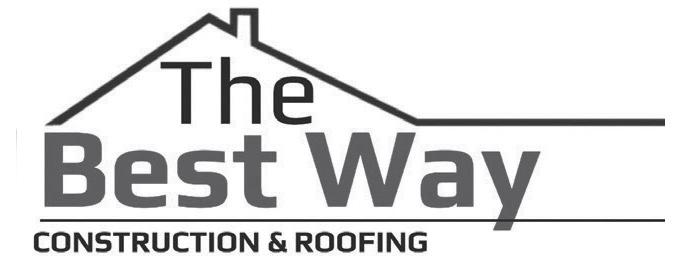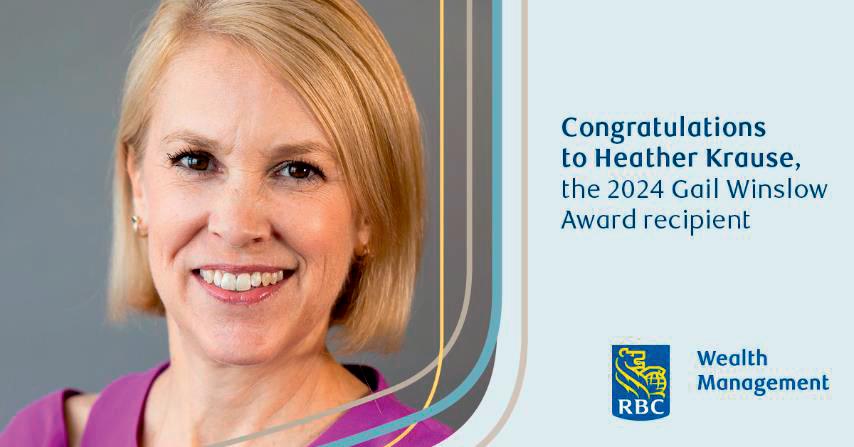

Seattle school program leads the way for America’s future educators
toward their future careers.
During a cloudy day in West Seattle, Summit Atlas ninth grader Beni Zundel passed out lollipops to sixth graders engaging in a lesson about matter and light. Only three years their senior, Zundel thrives in her two-week long Teaching Assistant role, mentoring the children in science and ensuring that their work was not only satisfactory but successful. This short-term role turned into a weekly opportunity for Zundel, furthering her interest in pursuing education.
At Summit Atlas, a Seattle charter public school, a unique program known as "Expeditions" empowers students to explore their passions and develop essential skills. This program allows students to engage in local partnerships, giving them hands-on experience in various fields. For ninth graders, like Zundel, this opportunity is particularly significant, serving as a stepping stone
“Expeditions offer our students the chance to explore a wide range of career fields through our personalized learning approach and academic model,” says Portia Reidel, Dean of Expeditions.
“As a small high school, we can tailor these experiences to meet each student's needs, helping them discover their ‘Concrete Next Step.’ This is the very purpose of Expeditions: to allow students with specific interests to try out a potential career path before committing to a college program, graduate degree, or the lengthy and costly post-high school training often required for many professions.”
Zundel, who joined Summit Atlas in seventh grade, chose to become a Teacher Assistant for her Expedition.
"I always wanted to make a change in the world," she says. "I wish to be that person for young kids so I can support and help them through their struggles of growing up." By working closely with sixth graders, Zundel discovered not
only her passion for teaching but also the impact she can have on younger students.
As a Teacher Assistant, Zundel’s responsibilities included supporting science teacher Ms. McCallum’s class and assisting students with their final projects. Zundel believes she made a positive impact, as students often turned to her when they were unsure about what to do. She also emphasized the importance of setting boundaries, managing to maintain respect in the classroom while still allowing for an enjoyable atmosphere.
“Beni’s sense of responsibility has amplified since she first stepped foot into my classroom,” says Ms. McCallum. “Beni is beginning to grasp the leadership aspect of teaching, taking the lead in guiding students through their Do Now activities at the start of class. While it’s one thing to be a student who loves school and academics, it’s another to
Tax levies, not school closures, may be used to close Seattle Schools budget gap
Seattle Public Schools Superintendent Brent Jones is officially withdrawing his proposed plan to close elementary schools and is exploring increased levies to fill a lingering budget gap.
Jones wrote a letter to parents on Monday announcing that he was withdrawing his plan after determining there was “no longer a pathway for this approach for the 2025-26 school year.”
Seattle Public Schools was initially considering closing 17 to 21 schools to reduce a budget gap of approximately $100 million. Closing 21 schools would have saved the district about $30 million.
Jones then lowered the number of schools set for closure down to four. The schools were: North Beach Elementary, Sacajawea Elementary, Stevens Elementary and Sanislo Elementary.
However, on Nov. 19, Jones made a surprising announcement that he was considering pulling his preliminary recommendation after Seattle Public Schools parents, students, and school board members voiced frustrations over the plan.
The four school closures would have saved the district $5.5 million out of the $100 million gap.
“The projected $5.5 million savings from the proposed closures are significant,” Jones stated in his letter. “However, we agree that achieving these savings should not come at the cost of dividing our community.”
The district will now consider levy renewal to secure long-term financial stability for the district.
Seattle Public Schools is asking voters to renew two levies in the Feb. 11, 2025, election: The Educational Programs and Operations Levy and the Building Excellence VI Capital Levy.
The Educational Programs and Operations Levy has a current tax rate of 63 cents per $1,000 in assessed value. This means a median home worth $877,694 would pay $552 a year toward the levy.
The Building Excellence VI Capital Levy’s rate is estimated to be somewhere between 79 cents to 93 cents per $1,000 in assessed value. This means that $877,694 home would pay a potential maximum of $816 a year toward the levy if passed by voters.
Seattle Public Schools is also focusing on finding $40 million in state funding, which Jones previously said members of the Legislature have had productive discussions to secure that funding.
Lastly, the Seattle Public Schools Board is looking at $30 million in internal savings.

By Spencer Pauley The Center Square
By Lauren Rosenthal
Submitted
Summit Atlas ninth grader Beni Zundel participated in a two-week long Teaching Assistant role.
COURTESY
Queen Anne & Magnolia Worship Services

Sunday Worship at 10am Live Streamed on our Facebook page and YouTube. Simply look for Magnolia Lutheran Church.
Twelfth Church of Christ, Scientist
In Person and Online Church Services
All are welcome & warmly invited to join these healing services
For best audio results, please join by clicking on the link from your computer or smartphone and choose “Call Over Internet”
All Zoom Services Meeting ID: 418 806 2637 https://us02web.zoom.us/j/4188062637
Sunday Services 11:00am – 12noon Pacific
Wednesday Testimonies 7:30pm – 8:30pm Pacific
Christian Science Quarterly Bible Lessons
Our weekly Bible Lesson Sermon may be found here: https://quarterly.christianscience.com/
Additional Healing Resources: ChristianScience.com CSWashington.com SeattleMetroReadingRoom.org
For additional assistance, please contact us at seattle12cs@gmail.com or 206.283.2300 ChristianScienceTwelfthSeattle.com
For a Healthier You CHIROPRACTORS
DENTISTS
Queen Anne Dental Group

Dr. Frank J. Calvo & Family
Cosmetic, Implant, & General Dentistry
400 Boston St. 206-284-7812 www.QADG.net





Chiropractic AND Massage Therapy
Darrell Gibson, D.C. • Sarah Gibson, D.C. Graeme Gibson, D.C.
David E. Goodall III, LMT
Sarah Rose Nottingham, LMT
Lauren E. Traynor, LMT
SERVING THE FAMILIES OF QUEEN ANN E SINCE 1991 1905 Queen Anne Ave N • 206.282.8275 www.QueenAnneChiro.com
Savvy Senior: What you’ll pay for Medicare in 2025
Dear Savvy Senior,
I know there will be a small 2.5 percent cost-of-living increase in Social Security benefits next year, but what about Medicare? What will the Medicare Part B monthly premiums be in 2025, and when do the surcharges kick in for higher income beneficiaries?
Medicare Beneficiary
Dear Beneficiary, The Centers for Medicare and Medicaid Services recently announced their cost adjustments for 2025 and the increases for premiums and out-of-pocket costs for most beneficiaries will be moderate. But if you’re a high earner, you’ll pay significantly more. Here’s what you can expect to pay in 2025.
PART B PREMIUM
While Medicare Part A,

which pays for hospital care, is premium-free for most beneficiaries, Part B, which covers doctor visits and outpatient services does have a monthly premium.
Starting in January, the standard monthly Part B premium will be $185, up from $174.70 in 2024. That $10.30 bump represents a 5.9 percent increase, which is more than double the most recent Social Security cost-of-living adjustment which was 2.5 percent. But if you’re a high
Washington
earning beneficiary, which makes up about 8 percent of all Medicare recipients, you’ll have to pay more.
Medicare surcharges for high earners, known as the income-related monthly adjustment amount (or IRMAA), are based on adjusted gross income (AGI) from two years earlier, which means that your 2025 Part B premiums are determined by your 2023 AGI, which is on line 11 of the IRS tax form 1040. Here’s how it breaks
cities to ask state
down. If your 2023 income was above $106,000 up to $133,000 ($212,000 up to $266,000 for married couples filing jointly), your 2025 Part B monthly premium will be $259.
Monthly Part B premiums for singles with an income between $133,000 and $167,000 ($266,000 and $334,000 for joint filers) will rise to $370.
Individuals earning above $167,000 up to $200,000 ($334,000 to $400,000 for joint filers) will see their monthly Part B premium increase to $480.90.
Those with incomes above $200,000 up to $500,000 ($400,000 to $750,000 for joint filers), will pay $591.90 per month in 2025. And single filers with income of $500,000 or more ($750,000 or more for joint filers) will pay $628.90 per month.
PART D PREMIUM
If you have a stand-alone
to raise cap on annual property tax increases
As federal COVID-19 pandemic aid dries up and budget deficits mount, cities across the state are asking their legislators to let them tax residents more than the 1% cap on annual property tax increases.
November and December are budget season for a lot of areas, and this year is no different, other than a loss of funding. Since March 2020, the state has distributed around $10.9 billion in COVID-19 relief, but there’s not much left or time to spend it.
The federal government requires local governments to allocate the remaining funds by the end of this year and spend it by the end of 2026, or they could lose the money. Many cities use the one-time funds for new programs and infrastructure, creating sustainability problems as spending peaks.
However, the Association of Washington Cities, which represents nearly all 281 cities and towns across the state, says the 1% limit on annual property tax increases is to blame, not spending.
“The current cap has created a structural deficit in city revenue and expenditure models, leading to artificial restrictions on the use of property taxes to fund community needs,” according to an AWC fact sheet included with its 2025 legislative priorities. “To make ends meet, cities cut services or rely upon more regressive, and less reliable, revenue sources.”
The association and its members are pushing to increase the cap to 3%. Doing so would raise more revenue, but at the expense of taxpayers. Under a 3% cap, local governments could raise their property tax rate by three times as much as they

currently do each year without voter approval.
According to Trading Economics, the average U.S. inflation rate since 1914 is around 3.3%, so a 3% cap would be more in line with rising costs. Cities can already levy over the current 1% cap, but only for specific purposes approved by its voters; the same would likely stand under a new limit.
The Legislature initially passed an annual cap on property tax increases in 1973, but it was 6% before it was reduced to what it is now in 2001. The request to hike the cap again coincides with the state government expecting to overspend their record-high $72 billion budget by up to $12 billion over the next four years.
“State law requires the … general fund operating budget to be balanced over four years,” according to the Washington State Office of Financial Management, “meaning that the projected cost of maintaining programs and services cannot exceed forecast revenue over that period.”
Local governments are finding
Medicare (Part D) prescription drug plan, the average premium in 2025 will be $46.50 per month for most beneficiaries, down from $53.95 in 2024. But again, for high earners with annual incomes above $106,000 ($212,000 for joint filers) you’ll pay a monthly surcharge of $13.70 to $85.80 (based on your income level) on top of your regular Part D premiums.
HOW TO CONTEST INCOME
Beneficiaries that fall into any of the high-income categories and have experienced certain life-changing events that have reduced their income since 2023, such as retirement, divorce or the death of a spouse, can contest the surcharge. For more information on how to do this, see “Medicare Premiums: Rules for HigherIncome Beneficiaries” at SSA.gov/benefits/medicare/ medicare-premiums.html.
OTHER MEDICARE INCREASES
In addition to the Part B and Part D premium increases, there are other cost increases you should be aware of. For example, the annual deductible for Medicare Part B will be $257 in 2025, which is $17 more than the 2024 deductible of $240. And the deductible for Medicare Part A, which covers hospital services, will increase to $1,676 in 2025. That’s $44 more than the 2024 deductible of $1,632. There are no surcharges on Medicare deductibles for high earners. For more information on all the Medicare costs for 2025 visit Medicare. gov/basics/costs or call 800-633-4227.
Send your senior questions to: Savvy Senior, P.O. Box 5443, Norman, OK 73070, or visit SavvySenior.org. Jim Miller is a contributor to the NBC Today show and author of “The Savvy Senior” book.
‘We’re not out of the woods yet’: Seattle budget approved amid lurking challenges
The Seattle City Council approved its 2025-2026 budget, which closes a $268 million operating deficit, but city officials prepare for future challenges in 2027.
The 2025-2026 adopted budget heavily relies on the city’s JumpStart Payroll Tax to close the budget deficit, with $520 million coming from the tax that applies to the city’s largest companies.
themselves in a similar situation, scraping the bottom of the jar for extra funding. At the same time, voters just rejected initiatives that would’ve repealed the state capital gains tax and climate regulations driving up the price of fuel and consumer goods.
According to Smartasset, the median home in King County, the most populous in the state, costs around $601,100, with the median annual property tax payment at $6,328.
Increasing $6,328 by 1% would mean spending around $6,391 next year, but a 3% cap could drive that up to about $6,517. However, AWC contends that increasing the cap would only result in taxpayers spending less than $20 more annually.
According to the Washington State Department of Revenue, current and unpaid property taxes totaled $17.6 billion in 2023.
“Cities have done our best for more than 20 years to serve our residents with this arbitrary 1% limit,” according to the AWC fact sheet, “but we can’t keep going without real harm to our communities.”
The city also had to lay off approximately 70 city workers in order to fill the gap, although the city council successfully restored proposed layoffs to its Seattle Channel staff.
Highlighted budget initiatives include $342 million towards affordable housing in order to help the city handle one of its top priorities: homelessness. It also boosts the Seattle Police Department’s operating budget from $395.8 million in 2024 to approximately $458 million in 2025 and $462 million in 2026. A recent revenue forecast for Seattle revealed a $48.6 million decrease in general fund revenue from 2024 through 2026 since the proposed 2025-2026 budget was transferred over to the Seattle City Council last month.
This update concerned council members and implies more work is to be done in order to address future budget deficits after 2026.
“Fiscally, we’re not out of the woods yet,” Seattle City Council Chair Sara Nelson said in a statement. “This budget isn’t perfect and there is more work
ahead – but moving forward we are better positioned to make informed decisions about our investments and demonstrate our commitment to being accountable stewards of public resources.”
The budget was approved by an 8-1 vote with Tammy Morales being the lone vote in opposition. Morales said the city council has turned a blind eye and a deaf ear to constituents that showed opposition to the budget.
“Despite calls for fiscal responsibility, good governance, and data-informed decision making, this budget does not reflect Seattle’s values of care, prevention, equity, nor does it reflect the bold vision we need to create thriving and healthy neighborhoods,” Morales said in the council meeting.
Morales noted that the budget increases funding for Seattle Police and Fire Departments, Office of Emergency Management and the city’s Unified Care Team, but cuts their IT support by 25%, leaving the teams without the technology support they need.
She mentioned the recent “bomb cyclone” that hit the region, which resulted in hundreds of calls to the fire department. Seattle police staff emailed the council expressing their gratitude for the IT support during the storm.
“[During] future disasters, that support will be greatly diminished to our emergency response system,” Morales added. With the city council’s approval, the budget package now goes to Seattle Mayor Bruce Harrell for his signature.
ADOBE STOCK IMAGE
By Tim Clouser
The Center Square
By Spencer Pauley The Center Square
ADOBE STOCK IMAGE
Stuffed mushrooms are timeless, popular appetizers. They make terrific hors d'oeuvres. The fillings vary from luxurious crabmeat or crumbled sausage to melty cheesy and wilted spinach. However, as rich and gooey as these fillings are, they run the risk of overpowering the flavor of the mushroom itself, which really isn't fair. After all, if the humble mushroom is doing the heavy lifting as a vessel for the stuffing, it also deserves to be front and center in flavor.
This recipe gives the mushroom its due respect by using it in two ways: as the vessel and a duxelles filling. Duxelles is a French preparation of finely chopped mushrooms, sauteed until the juices release, along with aromatics to enhance the mushroom flavor. The result is an intense mound of fungi that may appear underwhelming, but delivers deep, earthy flavor.
Duxelles can be used in myriad ways. Spread a dollop on crostini for a simple appetizer; stuff them in fresh pasta or fold into

risottos. Stir a spoonful into sauces as a flavorful thickener, or use them as a stuffing for poultry and a key ingredient in a traditional beef Wellington. When making duxelles, any mushroom will do. However, a variety of wild mushrooms, such as porcini, shiitake, chanterelle and portobello, will gift you with richer flavor. And consider
making an extra portion to have on hand. Duxelles can be made in advance and refrigerated for one week or frozen for up to one month.
STUFFED MUSHROOMS WITH DUXELLES
Active time: 20 minutes
Total time: 45 minutes
Yield: Makes 12 stuffed mushrooms (and about 2 cups duxelles)
Duxelles:
■ 1 tablespoon olive oil
■ 1 tablespoon unsalted butter
■ 1 pound fresh mushrooms, such as cremini or porcini, cleaned and trimmed, coarsely chopped
■ 1 medium shallot, finely chopped
■ Kosher salt
■ 2 garlic cloves, minced
■ 1 teaspoon dried thyme
■ 2 tablespoons port wine or brandy, such as Calvados
■ 1/2 teaspoon freshly ground black pepper
Mushrooms:
■ 12 large, firm cremini mushrooms, about 1 pound
■ 2 tablespoons cream cheese, softened
■ 1/4 cup plus 2 tablespoons finely grated Parmigiano-Reggiano cheese
■ 2 tablespoons finely chopped Italian parsley leaves
■ Olive oil for brushing
■ Kosher salt
■ 1/4 cup panko (Japanese breadcrumbs)
Make the duxelles: Heat the oil and melt the butter in a heavy or cast-iron skillet over medium heat. Add the mushrooms and shallot and season with salt. Saute until the mushrooms release their juices, about 2 minutes. Add the garlic, thyme and brandy. Saute until the juices evaporate and the mushrooms begin to color, 3 to 4 minutes more. Transfer the mushroom mixture to a food processor and pulse to chop without making a paste. Season to taste with more salt and the black pepper.
HIGHLAND DRIVE | QUEEN ANNE HILL
Transfer to a bowl and cool to room temperature.
Heat the oven to 400 degrees.
Remove the stems from the mushrooms. Use a small spoon to carefully scoop out any gills and discard.
Add the cream cheese, 1/4 cup Parmigiano-Reggiano and parsley to the duxelles and stir to combine. Taste for seasoning.
Lightly brush the mushrooms with oil and a pinch of salt. Spoon the filling into the cavities. Combine the remaining 2 tablespoons Parmigiano-Reggiano and the panko in a bowl. Sprinkle the breadcrumb mixture over the mushrooms, gently pressing to adhere and slightly flatten the filling.
Arrange the mushrooms on a rack placed over a baking sheet (this will allow the mushrooms to drain their juices while baking). Bake in the oven until golden brown on top, 20 to 25 minutes. Serve warm.
Lynda Balslev is an award-winning writer, cookbook author, and recipe developer based in northern California. Visit TasteFood at TasteFoodblog.com.








By Lynda Balslev
COURTESY LYNDA BALSLEV
Washington trucking industry warns of Jan. 1 limit on new gas truck and RV sales
By Carleen Johnson The Center Square
Washington state’s trucking industry is urging Gov. Jay Inslee to reconsider a first-of-the-year commitment to align with California’s Advanced Clean Trucks regulation, which requires a certain percentage of so-called "zero emissions" trucks to be sold in the state.
This goes back to 2020, when Washington lawmakers committed to follow California’s strict emissions mandates.
It got more critical last month when on Oct. 23, the California Air Resources Board (CARB) amended its ACT standards to require manufacturers to gradually increase the percentage of zero-emission vehicles they sell with targets from 4% to 7%.
Washington has agreed to be in lock step with the California mandates when the new changes to take effect Jan 1.
“The bill that was passed in 2020 has permanently ceded our authority unless we decide to unlink ourselves from California,” said Washington State Truckers Association CEO Sheri Call in a Thursday interview with The
PROGRAM
From page 1
excel in a teaching role and effectively meet the needs of each student."
This experience solidified Zundel’s desire to become a teacher. Such aspirations resonate deeply within the Expeditions framework at Summit Atlas, where students are encouraged to explore their interests and cultivate leadership skills early on.
Reflecting on her ninthgrade experience, Zundel expresses gratitude for the maturity and respect she receives from her teachers, who treat students as equals while still maintaining authority.
This environment encourages personal growth and allows students to navigate their challenges more effectively.
“By giving them a 'day in the life' experience, we provide them with valuable insights to make informed decisions,” says Portia Reidel. “It’s crucial for students to gain this hands-on understanding, especially when navigating the education system can feel so different from actually being in the
BUDGET
From page 1

Center Square.
The new rules apply to large trucks and RV’s that weigh more than 8,500 pounds, with a requirement that sellers first prove they have sold a certain percentage of zero-emission vehicles, before they can sell the traditional gas- and diesel-powered rigs.
“With zero emission vehicles, we have no infrastructure and no guaranteed timeline for installment of that infrastructure,” said Call.
“Along with all of the other operational challenges with battery electric vehicles for the industry, along with loss of capacity and payload, we are concluding that we either keep our old trucks running or we
workforce. This firsthand experience is incredibly important.”
One of the most rewarding moments for Zundel was the recognition she received from the sixth graders she assisted. "A bunch of middle schoolers would run up to me and say, 'Beni!! She's the best high schooler!'"
Zundel’s pride in making a positive impact encapsulates the essence of the Expeditions program, which not only prepares students for future careers but also cultivates empathy and
leadership.
purchase and operate trucks from outside the state,” said Call, who noted it’s a perverse effect because the same trucks purchased outside the state will be operating in Washington, or operators will delay making a new purchase and the trucks on the road will be older.
The new rules will impact RV and motorhome sales in Washington as well.
Middle ground in the RV world is considered the Class C RV. On average, a class C will come in around 10,000 to 12,000 lbs., according to RVShare.com. Any new rig over 8,500 lbs. is subject to the new rules.
Call explained the future of
Summit Atlas is setting a powerful precedent with its Expeditions program, especially for ninth graders like Zundel who are poised to become the next generation of educators. By fostering early connections between students and their aspirations, the school is not only enriching individual lives but also laying the groundwork for a brighter future in education. As Zundel and her peers embark on their journeys, they are already becoming the
Decreasing enrollment has been a major factor in producing the budget gap. Over the past seven years alone, enrollment at Seattle Public Schools has dropped by 4,000 students. Despite this, the district still operates nearly the same number of school buildings.

electrically charged freight haulers is anyone’s guess.
“Even at a fast charge, it’s an hour-and-a-half to charge a truck, versus stopping for 20 minutes to fuel up, so it’s a huge capacity loss and on top of that, the trucks are heavier so you lose payload capacity and it’s just a non-starter for the heavy freight industry,” said Call.
“The only hope that we have given the environment we’re in is that they put a pause on implementation,” said Call. “I know that’s what other states are talking about now for at least two years, but the same problems will exist in two years, because there’s no commitment at this point from anyone to build out public electric charging stations for the commercial truck industry.”
Meantime, Call says truck sales and operations are going across the state border.
“Idaho is not too far away, and they are not a CARB adopting state and subject to these policies, so a lot of our members unfortunately who still need to serve their customers at a price competitive point, are operating from Idaho as it’s more appealing to them,” said Call.
The Trucking Association sent a
change-makers they wish to see in the world.
“It’s inspiring to see students like her – joyful and grateful for the opportunity – forming meaningful
letter to Gov. Inslee over the summer urging a delay.
“We feel these issues will place constraints on the industry and reduce supply chain resiliency in Washington state -- one of the most trade-driven states in the nation,” Call wrote. “We don’t have to look back too far to understand the impact of shortages of goods and medical supplies during the pandemic as a result of trucking industry labor and equipment shortages. Imagine the negative impact to affordability in our state and to any environmental gains if trucks are dispatched to Washington from further away."
The Department of Ecology responded to a request for comment via email, which said in part:
"Manufacturers will have three years to meet the new zero emission sales targets, and they do not have to meet those targets before selling vehicles in Washington. Along with producing more zero emission or hybrid vehicles, manufacturers can also purchase credits from other companies, or pay a fine if they are unable to meet the requirements," said Deputy Communications Director Andrew Wineke via email.
relationships with younger students,” says Reidel. “One of the sixth-graders in her class, for example, who was usually quiet, opened up and became more engaged
when she introduced new activities. These moments highlight how valuable these experiences are for both our students and the community they’re building.”
Heather Krause receives RBC Wealth Management’s annual Gail Winslow Award

MINNEAPOLIS, Sept. 18, 2024 Heather Krause, branch director and financial advisor in RBC Wealth Management’s Edmonds, Wash., office, has been named the recipient of the firm’s 2024 Gail Winslow Award.
The annual award recognizes women at the firm who demonstrate exemplary efforts to help attract, support and retain women financial advisors, leaders and clients. Krause, who leads an allwomen team of financial professionals, received the award at the firm’s Women’s Association of Financial Advisors (WAFA) conference earlier this month.
Krause is a passionate coach and confidante in WAFA’s mentoring program and helps attract more women to the firm through her involvement in women-centric recruiting events. Her commitment to these initiatives demonstrates her dedication to diversity, inclusion and the advancement of women in finance.
“Mentorship and the importance of empowering women as leaders are concepts instilled in me by my mother since I can remember. She has positively demonstrated both and recruited me into this industry to continue that thoughtful leadership and legacy of support,” Krause said.
“Fostering a true sense of belonging helps women find their own path − as clients, financial advisors and leaders.”
In addition to this crucial work, Krause helped raise over $65,000 during the 2024 RBC Race for the Kids benefitting The Boyer Children’s Clinic, a Seattle nonprofit dedicated to raising awareness, funding research and supporting children with neuromuscular disorders or developmental delays.

“Heather’s commitment to creating an inclusive work environment and providing opportunities not only for the women of WAFA, but throughout RBC Wealth Management makes her an ideal recipient for the Gail Winslow Award,” said Darryl Traweek, West Divisional Director at RBC Wealth Management – U.S. “Her positive attitude, fierce advocacy and strong work ethic helps make our firm a great place for everyone to work and thrive.” The Gail Winslow Award was established in
ADOBE STOCK IMAGE
King County Council members propose relief for bomb cyclone victims
By Spencer Pauley
The Center Square
King County officials are working to provide relief for residents impacted by the recent bomb cyclone weather event.
King County Councilmembers Sarah Perry and Reagan Dunn are introducing legislation that would create an expedited permitting process for home and business repairs due to the bomb cyclone including waiver of fees not covered by insurance.
Any costs for the permits would be absorbed by the county.
The legislation would also expand the county’s grants to include a program for residents who have incurred out of pocket expenses as a result of extended power outages. These expenses could include fuel for generators, spoiled food expenses, short term hotel charges, tree and branch removal, and impacts to farms with produce or animals.
“There are a number of county residents who are uninsured or underinsured who do not have any way to repair their homes or remove fallen trees,” Perry said in a statement. “We need to help these folks make repairs so they can recover from this cyclone and move on with their lives.”
Facing $10B
By Brett Davis The Center Square
According to the Office of Financial Management, Washington state is projected to face a budget imbalance of between $10 billion and $12 billion over the next four-year outlook period.
The looming shortfall is exasperated by record spending at the state level. Democrats approved more than 1,300 new policy-related appropriations at a cost of more than $6 billion in the 2022 supplemental budget alone. OFM officials blame slowing revenue forecasts, rising costs and expanding need for the looming budget gap, while critics claim the state has been reckless with its spending and hasn’t prioritized how best to utilize taxpayer dollars.
“This deficit is due to the recent revenue forecasts that were adjusted down and the increase in caseloads and the cost to maintain existing programs,” OFM Pat Sullivan said in a Nov. 8 memo.
OFM Deputy Communications Director Hayden Mackley went into more detail about several factors

A bomb cyclone – or a rapid intensification of a cyclone in a short period of time – hit the Puget Sound region on Nov. 19. It resulted in over 600,000 homes without power and at least two deaths.
On Monday, King County Executive Dow Constantine issued an emergency order that enabled the activation of the Regional Emergency Operations Center to coordinate with cities and partners like hospitals and the American Red Cross. The order also allowed the Solid Waste Division to waive service hours and fees for debris removal.
Constantine also directed the King County Sheriff’s Office to increase patrols as much as possible in the unincorporated areas to
reassure residents.
King County District Director Carson Coates told The Center Square that cost estimates related to the legislation will not come until the council hears back from Constantine’s office on an implementation plan.
“That being said, funds for the grant program could come from the general fund, or possibly, leftover pandemic funds,” Coates told The Center Square in an email.
King County staff could also pursue a U.S. Small Business Administration disaster loan program for uninsured or underinsured homes or businesses impacted by the storm. Funding would then come from the federal government.
The driver behind Washington state’s budget shortfall
By TJ Martinell The Center Square
Earlier this month, state officials reported that the operating budget faces a $10-12 billion deficit over the next four years.
Unlike during the Great Recession, the budget deficit isn’t due to a decline in revenue, as many of the state’s tax collections are at record levels while other new taxes have been imposed.
Although the state Economic and Revenue Forecast Council recently lowered expected revenue for the current and next biennium by $270 million, the state Department of Revenue reports that all state taxes generated $35.4 billion for the fiscal year 2023, a 5.8% increase from the 2022 fiscal year.
In that timeframe, the state sales tax revenue increased by 6.2%, while revenue from that has doubled since 2014, from $8 billion to almost $16 billion.
Other taxes have also had significant increases over the past 10 years. In the fiscal year 2023, the property tax brought in $4.5 billion. In 2014, it brought in $2 billion.
One major tax to buck that trend is the real estate excise tax, which brought in $1.4 billion in the 2023 fiscal year, a 44% decrease
from 2022. Yet, it’s still higher than the amount generated in 2007 when the housing market was at its peak.
Other significant tax increases or major new taxes include:
■ The estate tax, which increased from $366 million in 2022 to $847 million in 2023, a 131% increase.
■ The capital gains tax, which started collections in 2023 and brought in $847 million.
■ The business and occupation tax, which increased from $6 billion in 2022 to $6.6 billion in 2023, an 11% increase.
Overall, state revenue has almost doubled compared to 2014, when it brought in $17.8 billion.
During the Great Recession, state revenue began to decline beginning in the 2009 fiscal year. Revenue would not begin to increase until the 2011 fiscal year, which was still below 2008 revenue levels. Revenue finally went above 2008 in 2013. As a result, the state Legislature faced major budget deficits, including $5.1 billion in 2011 alone.
In his Nov. 8 memo to state agency directors, Office of Financial Management Director Pat Sullivan attributed the budget deficit “to the recent revenue forecasts that were adjusted down
and the increase in caseloads and the cost to maintain existing programs.”
“Transportation budget revenue projections also have trended down for several forecasts,” he wrote. “That, along with rising costs and increasing demands, has created a situation where revenues are not covering current commitments.”
Reacting to ERFC’s latest revenue forecast, Senate Ways & Means Chair June Robinson, D-Everett, wrote in a statement that “I will work with my colleagues and our incoming Governor to serve the needs of the people of Washington and provide the services they expect from their state government. At the same time, we need to right-size government to fit our post-COVID reality.” She added that “during the pandemic, many of our decisions centered on helping Washingtonians, schools, small businesses, and others simply survive the unprecedented challenges they faced. Now, as we look to the future, we’re building budgets that allow us to prioritize growth and sustainability without COVID overshadowing every decision. This is an opportunity to refine our focus and ensure our resources align with the needs of the people of Washington.”
in budget overspending, Washington considers $1.4B state worker pay hike

contributing to the deficit. “The amount of forecast revenue for the next four years has dropped since the most recent budget was enacted in March,” he emailed The Center Square. “The budget is required by state law to be balanced over four years – that’s why the projected deficit is calculated through June 2029 as we plan for the 2025-27 budget. The 2024 supplemental budget that was enacted was balanced over a four-year period, through the end of fiscal year 2027.”
According to estimates released Wednesday by the Washington State Economic and Revenue Forecast Council, Washington’s projected
near general fund revenue collections through 2029 decreased by $400 million overall from the September forecast.
“We’re seeing an increase in forecasted caseloads, which are the projected numbers of people that receive state services,” Mackley continued. “Some of the larger increases are in state-funded kindergarten and child care programs. We’re also seeing an increase in costs related to inflation, and other costs of maintaining programs. Some programs included in that ‘maintenance level’ are constitutional and other legal obligations; others are enacted by the Legislature.”
Not everyone is buying OFM’s explanation for the looming deficit.
Washington Research Council’s Emily Makings took lawmakers to task in a Nov. 12 blog, stating that the “estimated shortfall is the result of legislative spending choices. The Legislature chose to increase appropriations in 2023-25 by 15.8% over 2021–23, at a time when biennial revenues were expected to increase by 3.5%.
Now that bill is coming due.”
She previously noted that “Compared to the February revenue forecast (on which the current budget was based), the September revenue forecast is down by just $608 million through 2027–29. It didn’t help matters, but the revenue forecast decrease is not the cause of the problem. (Further, 2025–27 revenues are forecasted to be $5.132 billion higher than 2023–25 revenues.)”
Todd Myers, Vice President for Research at the Washington Policy Center think tank echoed those sentiments.
“Fundamentally, this problem was created by mismanagement of the budget and putting political priorities
ahead of fiscal sustainability,” he said. “What the Legislature did was to put programs at risk in the hope that the threat of cutting key programs is enough to force the public to support yet another huge increase in state taxes.
It is backward.”
Further complicating matters is the fact that the budget gap does not include the almost $1.4 billion needed to pay for the two-year collective bargaining agreements negotiated with state employee unions in the next budget.
“The determination on the collective bargaining agreements hasn’t been made yet,” Mackley explained. “This determination will occur close to when the governor’s budget proposal to the Legislature is published in mid-December.”
There is precedent for denying the pay raises.
Gov. Christine Gregoire was sued in late 2008 by the Service Employees International Union’s Local 775 for suggesting that workers’ pay raises be dropped as part of addressing the state’s impending budget deficit.
The union was awarded
pay and benefits increases worth more than $80 million in binding arbitration.
In April 2010, however, the state Supreme Court ruled it can’t force a governor to budget for raises awarded to a public employee union, even though state law says the governor “must” include that money in their spending proposal.
Myers said whatever decision is made regarding the pay raises will be an indication of the state’s priorities.
“At the very least, it is clear that the $1.3 billion in pay raises is not justifiable,” he said. “If the Legislature approves that contract, it will be very clear that legislators chose pay raises over programs that don’t get the funding that was previously promised.”
In the meantime, Mackley pointed to Sullivan’s memo that “directs state agencies to propose cost-saving measures, including hiring freezes and program delays, in response to the projected deficit. Agencies may choose to implement measures like hiring freezes or layoffs that result in immediate savings.”
ADOBE STOCK IMAGE
ADOBE STOCK IMAGE
